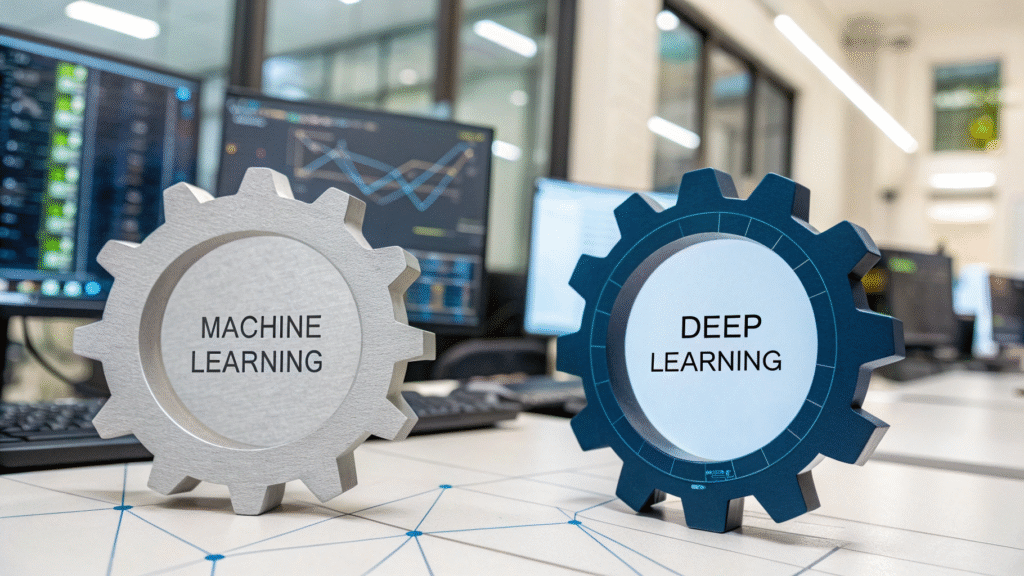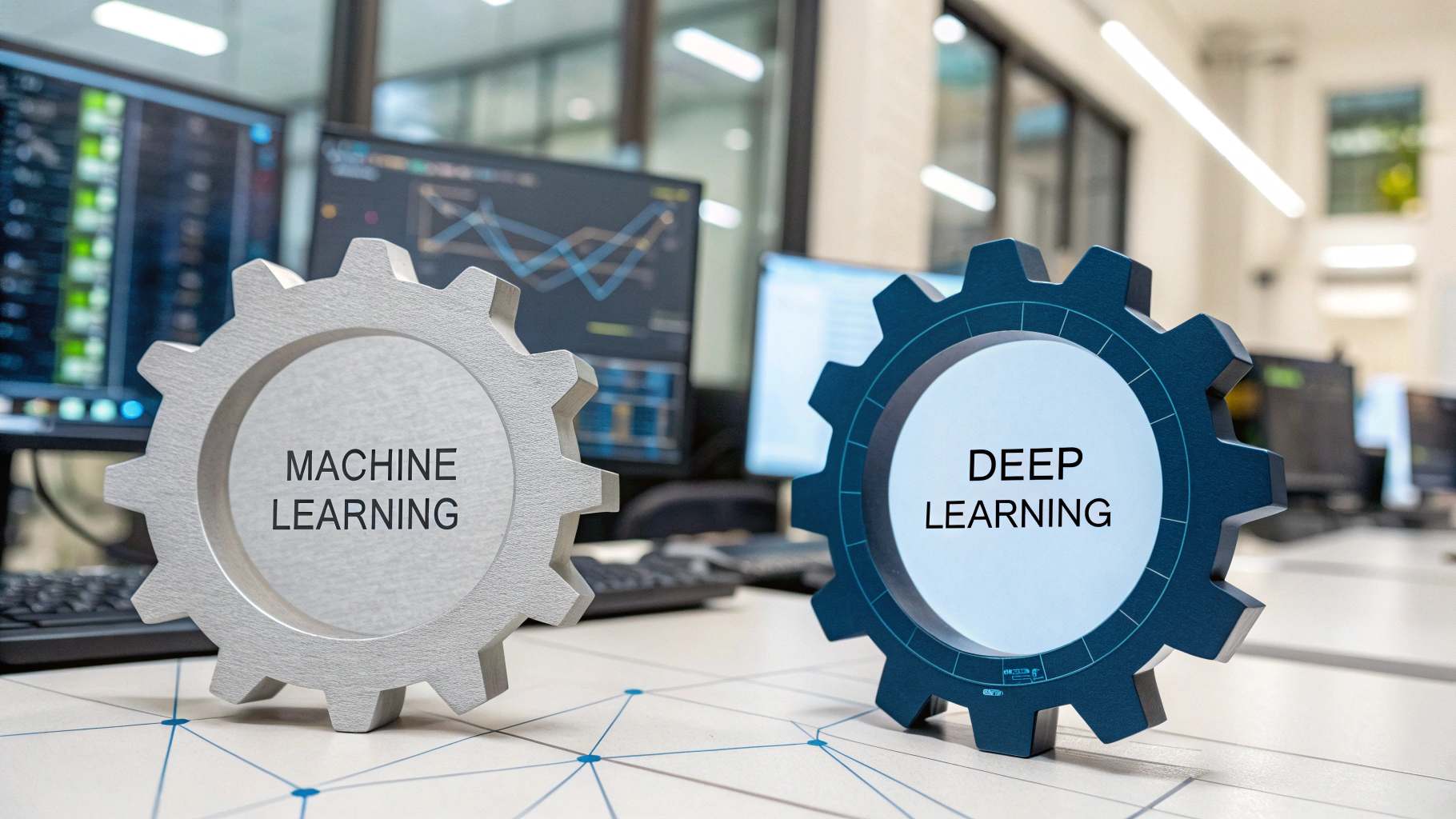Artificial Intelligence (AI) is one of the most exciting technologies of our time, and two of its most important branches are Machine Learning (ML) and Deep Learning (DL). These terms are often used interchangeably, but they are not the same.
Machine Learning is like teaching a computer using data and rules, while Deep Learning is a more advanced approach inspired by how the human brain works. In this article, we’ll break down the differences between ML and DL, their applications, advantages, and how they are shaping the future in 2025.

What is Machine Learning (ML)?
Machine Learning is a branch of AI where systems learn from data without being explicitly programmed. Instead of hardcoding rules, ML models use algorithms to find patterns in data and make predictions or decisions.
Key Features of ML:
- Works with structured data (tables, numbers, categories).
- Requires feature engineering (manually selecting important variables).
- Performance improves as more data is provided.
Common ML Algorithms:
- Linear Regression
- Decision Trees
- Random Forest
- Support Vector Machines (SVM)
- K-Nearest Neighbors (KNN)
Example of ML:
Predicting house prices using features like location, size, and number of rooms.
What is Deep Learning (DL)?
Deep Learning is a subset of Machine Learning that uses neural networks with multiple layers (hence “deep”) to learn directly from data. Unlike ML, DL does not require manual feature engineering because it automatically extracts features.
Key Features of DL:
- Works well with unstructured data (images, text, audio, video).
- Uses Artificial Neural Networks (ANNs) with multiple layers.
- Requires large datasets and high computational power.
Common DL Architectures:
- Convolutional Neural Networks (CNNs) — for image recognition.
- Recurrent Neural Networks (RNNs) — for sequential data like speech and text.
- Transformers — for natural language processing (ChatGPT, Google Bard).
Example of DL:
Facial recognition in smartphones, where the AI learns to detect patterns in images without manual rules.
Key Differences Between Machine Learning and Deep Learning
| Feature | Machine Learning | Deep Learning |
|---|---|---|
| Data Requirement | Works with smaller datasets | Requires massive datasets |
| Feature Engineering | Manual feature selection needed | Features extracted automatically |
| Hardware Requirement | Can run on normal computers | Needs GPUs/TPUs for processing |
| Training Time | Relatively short | Very long, depending on dataset |
| Interpretability | Easier to understand | More complex and “black box” |
| Best For | Structured data (tables, statistics) | Unstructured data (images, video, audio) |
How ML and DL Work in Real Life
Machine Learning Examples:
- Spam Email Detection — Classifying emails as spam or not spam.
- Fraud Detection in Banking — Identifying unusual financial transactions.
- Customer Churn Prediction — Predicting which customers may leave a service.
Deep Learning Examples:
- Self-Driving Cars — Recognizing pedestrians, signs, and vehicles.
- Voice Assistants — Siri, Alexa, and Google Assistant using speech recognition.
- AI Content Creation — Tools like ChatGPT or MidJourney generating text and images.
Advantages of Machine Learning
- Works well with small data.
- Faster and cheaper to train.
- More explainable and easier to interpret.
Advantages of Deep Learning
- Handles complex tasks like speech, vision, and natural language.
- No need for manual feature engineering.
- Achieves higher accuracy with big data.
Challenges of ML and DL
Machine Learning Challenges:
- Struggles with unstructured data.
- Requires domain expertise for feature engineering.
Deep Learning Challenges:
- Needs huge amounts of labeled data.
- Computationally expensive.
- Difficult to interpret decisions.
The Future of ML and DL in 2025 and Beyond
As AI evolves, ML and DL are becoming more integrated:
- ML + DL Hybrid Models — Combining the strengths of both.
- Automated Machine Learning (AutoML): Making ML easier for non-experts.
- Smaller Deep Learning Models: Efficient DL models that run on smartphones.
- Explainable AI (XAI): Making DL decisions easier to understand.
By 2030, DL will power most cutting-edge applications — from brain-computer interfaces to fully autonomous robots — while ML will remain crucial in business analytics, finance, and simpler automation.
Conclusion
Machine Learning and Deep Learning are both essential parts of Artificial Intelligence, but they differ in complexity, data requirements, and applications.
- Machine Learning is great for structured data and simple predictions.
- Deep Learning excels at handling unstructured data like images, text, and sound.
Both are not competitors but complementary technologies that together drive innovation in every industry.


